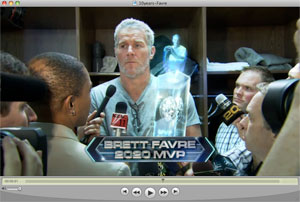
Two major auto makers share the same opinion on the importance of Super Bowl advertising, yet when it comes to bang for their buck they will be using different playbooks.
Ford Motor Co. and Hyundai Motor America executives agree marketing during the National Football League’s signature event this month, one of the most-watched broadcasts of the year, is best-suited for vehicle brands not fully established in the U.S. market.
For Ford, a 107-year-old car company whose brands are recognized by more than 90% of the population, advertising during the Super Bowl makes little sense. “The venue is perfect if you are a challenger brand that no one notices, or you want to launch a new product and get a lot of eyeballs quickly,” Jim Farley, Ford group vice president-global marketing, sales and service, tells Ward’s.
Farley would rather use his advertising resources elsewhere. He long has been an advocate of social-media marketing, a cost-effective method where the company’s message spreads virally through websites such as Facebook and Twitter.
In comparison, a 30-second slot during Super Bowl XLV, to be played in Dallas on Feb. 6, runs about $3 million, depending when the ad is aired.
Despite the hefty price tag, HMA plans to run three spots during the game, says President and CEO John Krafcik.
“For Hyundai, it’s absolutely perfect,” he tells Ward’s. “But I think Jim (Farley) is right. If you are established, especially in automotive, it’s probably not the best (way to advertise). If I had the Ford brand to worry about, or another brand with 90% awareness, I’d think differently.”
Although South Korea-based Hyundai has been in the U.S. market since 1986, it only began advertising during the Super Bowl in 2008. Krafcik says it’s “simple, yet (isn’t) necessarily obvious.”

There are two ways to communicate with customers, he says: mass and targeted marketing. A sociologist explained to Krafcik and his team that it wasn’t enough to concentrate on targeted marketing, alone.
“For a brand like Hyundai, where there is a wide variety of opinions and past experiences around the brand, if you target someone, even if they are open to considering the brand, you may be wasting money because you may not be talking to their social circles,” he says. “For expensive products like a car, (a consumer) needs more than your permission to buy the car; they need permission from friends, family and neighbors.”
By advertising during the Super Bowl, which is expected to draw a TV audience of up to 110 million viewers, Krafcik hopes to raise awareness of the Hyundai brand.
Thirty-three percent of consumers say they’re willing to “give us a shot,” he says. “But when you look at a brand like Honda or Ford, they are in the 60%-70% range.”
Another third of consumers say they have heard of Hyundai, “but are not sure (they would consider us), Krafcik says.
“And with the other third, there’s a negative opinion. They think of us like it was still 1992 (when Hyundai was known for poor quality), and there’s no reason for them to update that type of view.”
Krafcik is unfazed by the significant cost of advertising during the Super Bowl, noting it’s “less than 2% of our (advertising) budget for the year.”
It also yields a good turn on Hyundai’s investment, he says, citing data that shows traffic to Hyundai’s website increases 100% following the Super Bowl. Visitors who take the time to virtually build and price a car and ultimately visit a dealership grows by 50%.
“It’s amazing,” Krafcik says. “You look and say, ‘Yeah, I get it.’”
In the weeks before the Super Bowl, Hyundai also is planning to run ads during the American Football League Conference and NFL Conference championship games, which consistently rate as two of the most-watched sports programs of the year.
Krafcik is mum on what type of ads the auto maker plans to run, but says they won’t be over-the-top like those by beer and soft-drink companies.
Rather, they are designed to “get the brand out there and ensure we’re part of the conversation, so (consumers) feel like we’re a strong American company.” They also will prominently promote the new ’11 Hyundai Elantra.
Ford also is beginning to market a new product, the all-new ’12 Focus. However, Farley says he will employ social-media marketing, rather than spend big on sporting events.
“The hype we want to create is more at the consumer level to generate real authentic interest in the product,” he says. “The Super Bowl is not an authentic-interest kind of thing. We’re definitely more interested in the buzz and not the hype.”
Mike Bernacchi, a professor of marketing at the University of Detroit-Mercy, agrees with both game plans, but points out Ford will advertise prior to the Super Bowl, which costs less than an in-game spot.
Hyundai’s past Super Bowl marketing initiatives have hit the target, he says, but he disagrees with Krafcik’s assessment of how the public views his company.
“Hyundai used (the Super Bowl) well to brand itself and continues to roll along in the American marketplace,” Bernacchi says, noting he expects eight or nine auto makers to advertise during the game this year. “But (Hyundai is) no longer unknown. They’re now in the U.S. major leagues.”
Ultimately, there’s “some logic for not being there,” he says of advertising in the Super Bowl, but in the end the event is a unique marketing opportunity. “Where else in today’s fragmented market place can you get millions of individuals watching anything?”



